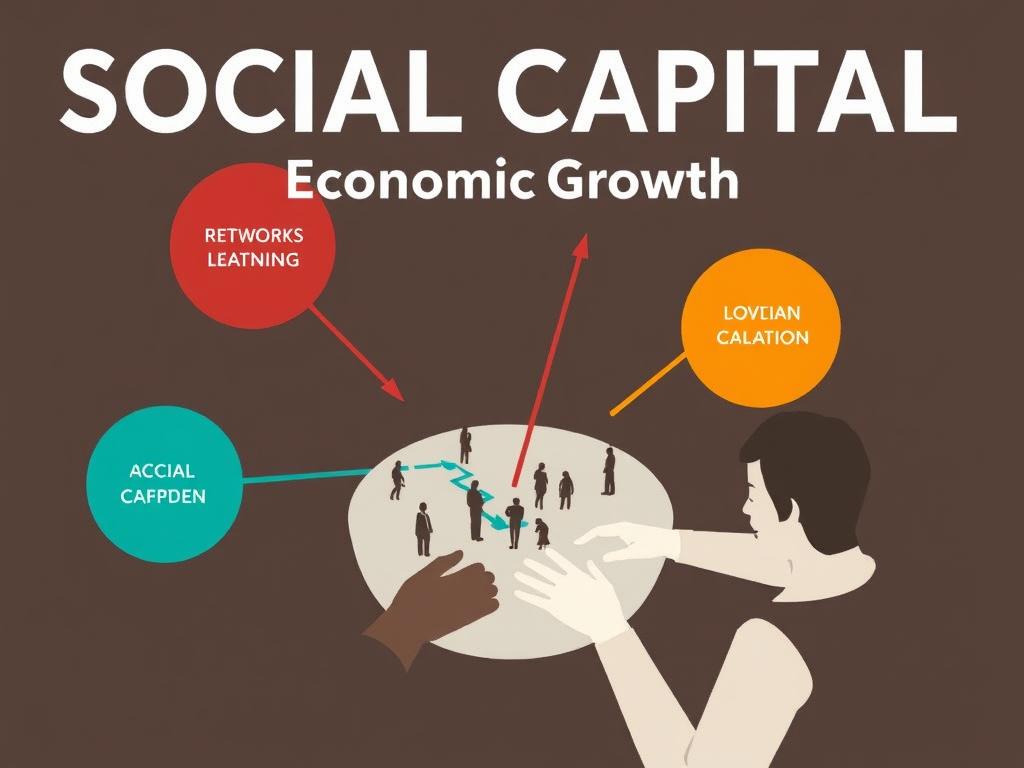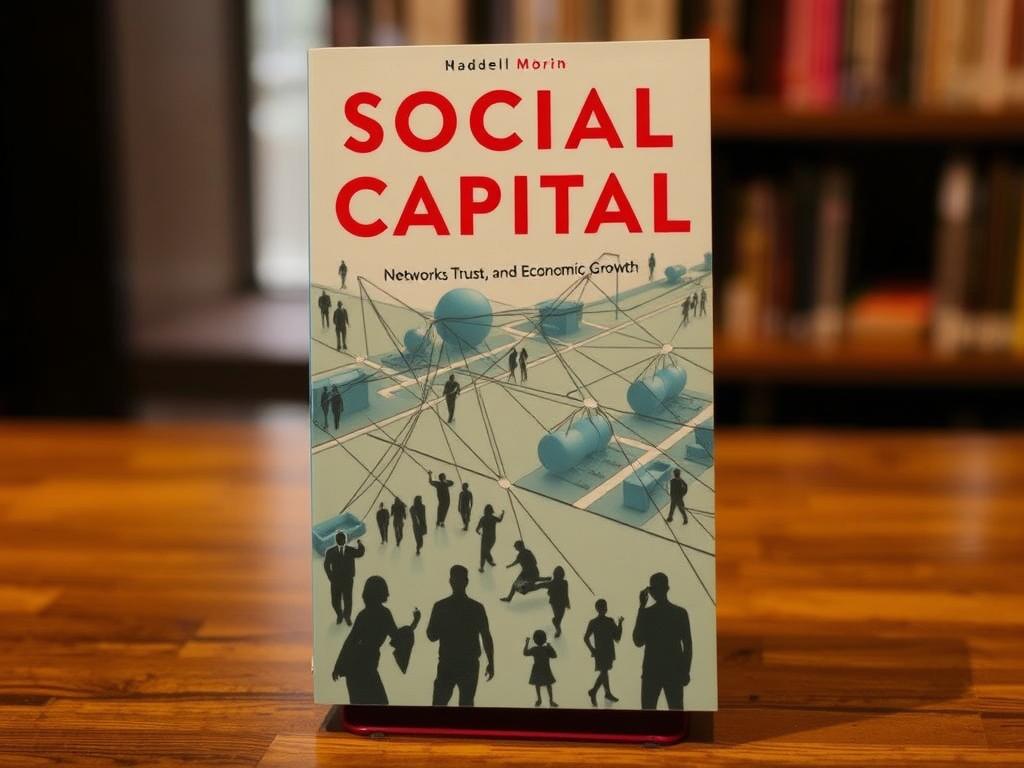Social Capital: Networks, Trust, and Economic Growth Explained
Social capital is a fascinating and essential concept that influences how societies and economies function and grow. At its core, social capital refers to the networks, relationships, and trust that connect individuals and groups within a community. These invisible bonds are powerful because they can lead to cooperation, shared resources, and collective action, all of which contribute to economic growth and social well-being. This article will take you on an insightful journey through the world of social capital, focusing on the importance of networks, the role of trust, and the impact these elements have on economic development.
Understanding Social Capital: What Is It Really?
Before diving deeper into how social capital affects economic growth, let’s clarify what we mean by social capital. Unlike physical or financial capital, social capital is intangible. It consists of the social relationships surrounding us—our friends, family, colleagues, and wider networks—which provide us with access to information, support, and opportunities. The key components of social capital include networks, trust, and norms that facilitate cooperation for mutual benefit.
For example, imagine you’re starting a small business. Your ability to succeed depends not only on your skills or financial resources but also on the contacts you have with suppliers, customers, and advisors. These connections form your network, and the presence of trust within these relationships makes transactions smoother and less risky.
The Building Blocks of Social Capital: Networks and Trust
Social networks are the structural foundation of social capital. They range from close-knit family ties to broader professional connections. These networks can be classified into two main types:
- Bonding Social Capital: Strong ties within close groups such as family, close friends, or ethnic communities.
- Bridging Social Capital: Weaker, more distant ties that connect diverse groups across different social divides.
Both bonding and bridging social capital have unique advantages. Bonding ties create strong emotional support and trust, which can be crucial during crises. Bridging ties, on the other hand, provide new information and wider access to resources, which are vital for innovation and economic dynamism.
Trust plays a critical role in social capital because it reduces transaction costs and encourages collaboration. When people trust each other, they don’t need extensive legal contracts or oversight, making cooperation faster and cheaper. Trust also fosters reciprocity—when one party helps another, it increases the likelihood that the favor will be returned, strengthening social bonds over time.
How Social Capital Drives Economic Growth

The connection between social capital and economic growth might not be immediately obvious, but it’s significant. Economies do not exist in a vacuum—they are embedded within societies where social networks and trust determine how smoothly exchanges happen. When trust is high and networks are strong, businesses can operate more efficiently, innovation can flourish, and investments become safer.
Here’s how social capital influences economic growth:
| Aspect | Impact on Economic Growth |
|---|---|
| Information Flow | Networks facilitate rapid exchange of information, leading to better market knowledge and innovation. |
| Trust and Reduced Transaction Costs | High trust reduces the need for costly contracts and legal enforcement, speeding up business dealings. |
| Cooperation and Collective Action | Communities with strong social capital can organize public goods provision and support economic initiatives. |
| Entrepreneurial Activity | Social networks provide resources like advice and capital essential for starting new ventures. |
For example, in many developing countries, social capital works as a lubricant that compensates for weak formal institutions. Communities with high levels of trust and cohesive networks often experience better economic outcomes, even in the absence of strong legal frameworks.
Challenges and Limitations of Social Capital
While social capital has numerous benefits, it is important to understand its limitations. Not all social capital is positive. Sometimes, strong bonding within closed groups can lead to exclusivity, discrimination, or resistance to change. For instance, tight-knit networks might discourage outsiders from joining or can perpetuate nepotism and corruption.
Additionally, social capital is not uniformly distributed within societies. Certain marginalized groups might lack access to influential networks or suffer from low trust, making it harder for them to participate fully in economic life. This inequality in social capital can exacerbate social divisions and economic disparities.
Building and Enhancing Social Capital
The good news is that social capital is not fixed—it can be cultivated and strengthened through deliberate policies and community efforts. Here are several strategies for enhancing social capital in a community or economy:
- Fostering Inclusive Networks: Encourage connections between diverse groups to bridge social divides and promote mutual understanding.
- Encouraging Civic Engagement: Participation in community organizations, volunteer groups, and public forums builds trust and collective responsibility.
- Improving Institutional Trust: Transparent governance and accountability increase people’s trust in public and private institutions.
- Education and Communication: Provide platforms for dialogue and shared learning to strengthen social norms and cooperation.
For policymakers and business leaders, investing in social capital can be as crucial as investing in physical infrastructure. Social capital networks have a multiplier effect on economic activities and create an environment where innovation and prosperity can thrive.
Examples of Social Capital in Action
To better understand how social capital operates in real life, here are a few notable examples:
- Silicon Valley: The tech hub’s success is frequently attributed to dense professional networks and high trust among entrepreneurs, investors, and researchers.
- Nordic Countries: High levels of trust and civic participation have contributed to these countries’ strong social safety nets and robust economies.
- Community Development in Rural Areas: Local groups collaborating through social capital initiatives often achieve better access to markets and resources.
Each of these examples shows how the intangible assets of social capital translate into tangible economic benefits.
Measuring Social Capital: How Do We Know It’s Working?
Quantifying social capital poses challenges because it involves intangible elements like trust and networks. However, researchers use a variety of indicators, including:
- Levels of civic participation and volunteerism
- Surveys measuring trust in neighbors and institutions
- Frequency of social interactions and associations memberships
- Extent of informal networks within communities
Many institutions now include social capital metrics alongside economic indicators to get a fuller picture of development and growth potential.
Conclusion
Social capital—the networks we build and the trust we nurture—is an indispensable engine of economic growth and social prosperity. Beyond bricks and mortar or money in the bank, these social bonds enable information sharing, reduce transaction costs, and foster collaboration that drives innovation and community development. While it has its challenges and inequalities, understanding social capital’s role empowers individuals, businesses, and policymakers to foster stronger, more inclusive networks. By investing in social capital, societies can create fertile ground for sustained economic progress and richer, more connected communities. Whether you are an entrepreneur, community leader, or everyday citizen, recognizing and nurturing social capital paves the way for a brighter economic future.







